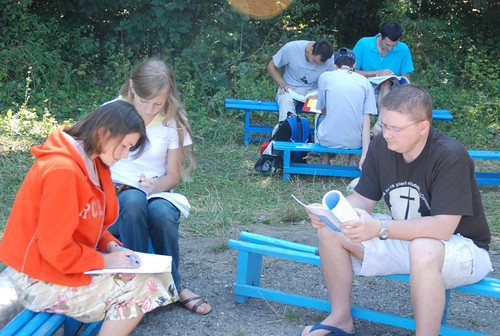We are in the intensive English learning camp and teach students the art of translation. I thought it would be good to put on the site some tips that we give to students so that everyone can benefit from them and become a better translator.

1. Translate the ideas exactly
The translator must learn to work with ideas and translate ideas and not words. If you focus on the exact translation of the words, you lose the ideas and you can’t translate them exactly. Always focus on the exact understanding of the idea and the translation, or the exact transmission of it. It takes a while to learn this, but it confuses you the most when you try to translate the words exactly.
2. A translator will not insist on the exact translation of words
The same combination of words, or phrase, conveys an idea in one language and completely different in another. For example, when you say “I am full” in English and translate the words exactly, you will say “eu sunt plin.” This translation does not work and sounds strange and unclear. Therefore, a translator must always be careful and focused on the exact transmission of the idea and not the words.
3. Look at the person(s) you are translating to
Eye contact plays a very, very important role in communication and when you translate, always look at the person, or people for whom you are translating, or who are receiving the message translated by you. This will help them a lot to understand, and by the expression on their face you will realize to what extent they understand or not the message translated by you.
4. Don’t always look at the person you’re translating for
Especially at the beginning, when he is not yet accustomed to the translation or speech of the person for whom he is translating, or when he does not yet know the language well from which he translates, every translator is very much tempted to always look at the person whom he is translating. Even the fact that you look at the movement of that person’s lips helps you better understand what he is talking about. Make every effort to learn to translate without looking at the person you are translating for, especially when translating in front of a crowd on stage. Learn to receive the message only with hearing and to transmit it exactly to the listeners. In fact, if you look back and forth between the listeners and the speaker, you confuse and tire the listeners.
5. Pay attention to the translation of figures of speech
Each people group has its own figures of speech or expressions that mean something specific only to those people. People in other languages will not understand what it means to say “put sticks in the wheels” (“a pune bețe-n roate”), “the fifth wheel in the cart” (a cincea roată la căruță), “to look for a knot in the rush” (a căuta nod în papură), and so on. But every culture has their equivalents, which convey exactly the same idea. For example, when English speakers say “to kill two birds with one stone,” it has exactly the meaning we put in the expression “to catch two rabbits at once.” Using these expressions, you will make the message you are translating quickly understood and relevant to the people you are translating. But, be careful not to show too much zeal and creativity because you can go too far and send a different message than the speaker intended.
6. A good translator will convey the emotional charge of the message
Each speaker also conveys a certain emotional charge along with his message. The translator must be careful not to diminish this charge that the speaker is looking to transmit. If the speaker is enthusiastic when he speaks and says things with passion, and the translator speaks softly and absent-mindedly, this badly affects the message that is being conveyed. So be careful to always convey the same emotional charge that the speaker intends to convey.
Be a good translator and I invite you to share your experiences on this site. Write a comment on this article.
Translated by Nicoleta Vicliuc
